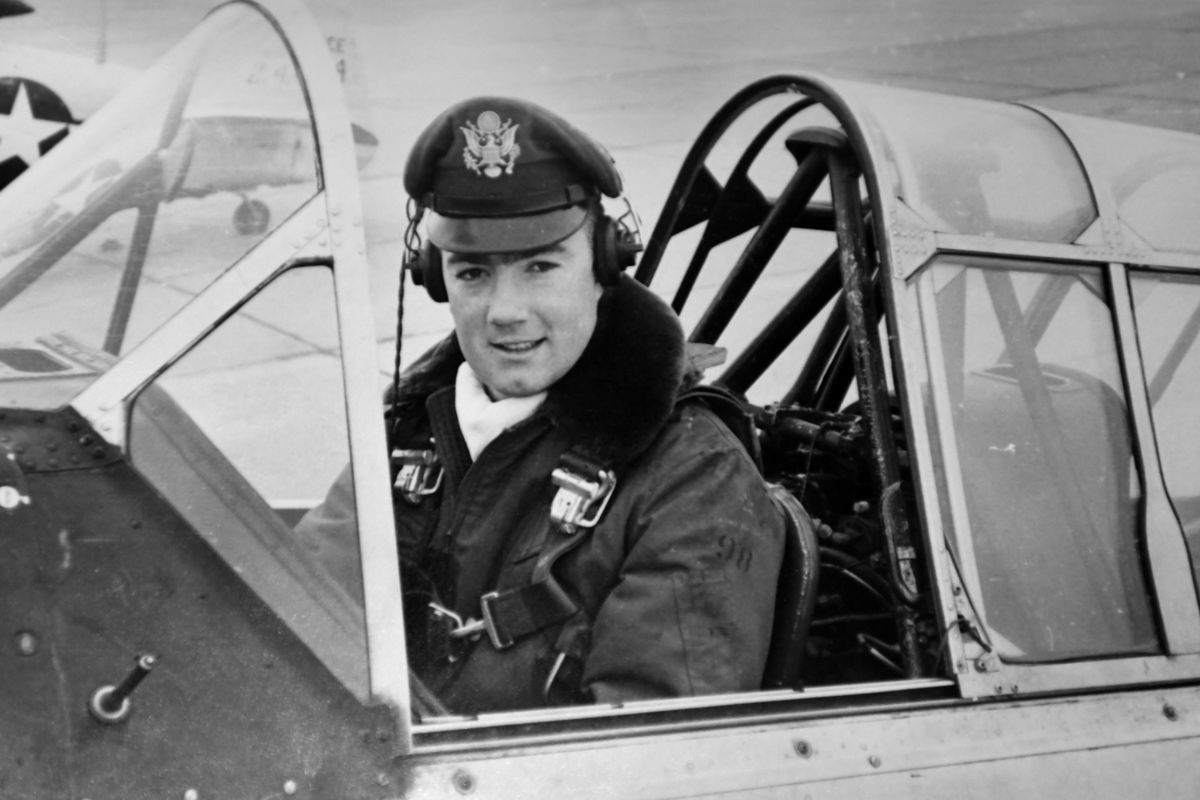This column reflects the opinion of the writer. Learn about the differences between a news story and an opinion column.
Doug Clark: U-2 pilot Charles Stratton used up ‘all of his nine lives’ in high-altitude exit

Nightmare at 73,000 feet.
Jan. 2, 1962. The autopilot guiding one of the country’s secret U-2 spy planes fails, sending the aircraft into a violent spin that is literally ripping it apart.
Charles Stratton, an experienced U-2 pilot, calculates the odds in an instant. His only shot at survival is to engage the seat ejector and blast out of this doomed machine.
The Air Force captain also knows that there is an unfortunate wrinkle with this plan: No pilot has ever been so crazy or desperate enough to attempt such an exit at such a high altitude.
…
North Spokane resident Charles B. Stratton died Tuesday from complications of prostate cancer.
The retired Air Force colonel and former U-2 spy plane pilot was 87 years old.
He was a decent, loving man who put his family above even his passion for hunting and fishing, which is saying a lot, according to his two sons, Chuck and Bob.
True to the fighter-pilot stereotype, Stratton possessed plenty of swagger. “He was a type-A leader and take charge kind of guy,” agreed Bob, 60. “But he also had a big heart and everybody loved him.”
When I heard about this man’s passing I couldn’t wait to drive to the Stratton homestead and meet the guys who believe their dad deserves to be remembered as an American hero.
They’re absolutely right. Stratton was one of a small, elite group of aviators who flew dangerous, high-altitude surveillance missions during those incredibly tense Cold War years, when the United States and Soviet Union were on the brink of turning each other into radioactive dust.
Known as a “fragile, and hard-to-maneuver beast,” Lockheed U-2 airplanes packed sensors and high-grade cameras that were designed to gather data and photograph the terrain below.
They still do. Mention the plane today and most people will probably think you’re referring to YouTube or the Irish band.
It surprised me to learn that U-2 airplanes – though upgraded and computerized – are still flying today.
Originally built for the CIA in the mid-1950s, no civilians knew America had such spycraft until May 1, 1960.
That’s the day Soviets shot down a U-2 flying over their airspace. The pilot, Francis Gary Powers, was captured and held until his release in a 1962 prisoner swap.
Stratton and Powers were more than poker buddies, said Chuck, 61, adding that his father even served as best man in the luckless pilot’s first wedding.
Stratton had a stellar career. He flew U-2 missions over Cuba during the Cuban Missile Crisis. He logged 165 combat hours over Southeast Asia in 1964 and 1965, and retired from Fairchild Air Force Base.
The man’s official list of commendations includes “the Legion of Merit, two Distinguished Flying Crosses, the Air Medal with eleven Oak Leaf Clusters, the Air Force Commendation Medal, the Armed Forces Expeditionary Medal, and the Vietnam Service Medal.”
But none of the exploits during Stratton’s 35-year military career quite compare with when that autopilot crapped out during a nighttime training mission over Mississippi.
“He used up all nine of his lives on that one bailout,” laughed Chuck.
Out of the airplane just before it exploded, Stratton found himself spinning with so much force that he feared he would throw up in his helmet and suffocate.
No one at Lockheed planned for such a high ejection. Because of that, the oxygen tank keeping Stratton alive was too small to last very long.
But what else could he do?
Enduring all the carnival gyrations he could, the captain opened his parachute and prayed he had enough O2 to get him below 20,000 feet where he could breathe naturally.
The oxygen ran dry. Stratton popped his helmet and hoped for the best.
Sure enough, he could breathe as he floated to earth and straight into the branches of a 125-foot Cypress tree.
It was 9:30 p.m. From the starlight Stratton knew he was over water. But it wasn’t enough information to let him know if he should climb down or stay put.
Stratton dropped his helmet – and listened. The resulting splash, he would later say, “sounded like a bucket going down into an empty well.”
He wisely decided to stay put. Using his emergency radio, Stratton called for help and began a wait that lasted overnight.
The front-page story that appeared in the Bryan Daily Eagle put it this way: “An Air Force rescue team plucked U-2 pilot Charles Stratton from a Cypress tree in snake-infested swamplands near Picayune (Miss.) today.”
Bob and Chuck never tire of telling the tale. Because of Stratton’s influence, the “boys” went on to their own military careers.
Chuck became a U.S. Army helicopter pilot. Bob graduated from West Point and later resigned his commission from the Army as a captain.
They both agree that of all the things their father accomplished, he had only one true love: Ann, his wife of 65 years, who still lives at their Spokane home.
She was “the center of his universe,” said Bob, in a choked voice. “Everything he did was to make her life better.”
Doug Clark is a columnist for The Spokesman-Review. He can be reached at (509) 459-5432 or by email at dougc@spokesman.com.